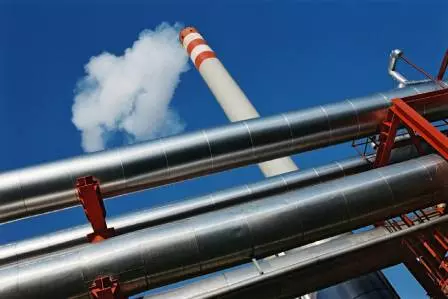To massively reduce greenhouse gas emissions, industrialists are increasingly banking on capturing CO2. Beyond carbon neutrality, certain applications could well even generate negative emissions.
What if we managed to absorb CO2 as it comes out of factory chimneys, and before it spreads into the atmosphere?
This is the principle of carbon capture technologies, so it is highly likely that they will be an ever increasing part of the world's industrial landscape.
The idea is not new: in Norway, the oil company Equinor (formerly Statoil) has been using carbon capture and capture technologies since 1996. At the same time, direct air capture, notably deployed by the Swiss start-up Climeworks for the past twelve years or so, is also making headway.
The surge in the price of carbon
In the industrial and energy sectors, implementing these technologies is still in its infancy. According to the International Energy Agency, in 2020, the annual capacity of CO2 capture reached 40 million tonnes, up from fewer than 15 million tonnes some ten years earlier. The 2020 figure represents one thousandth of the world's annual CO2 emissions (41.3 billion tonnes in 2019).
That said, the economic context was hardly favorable. Just five years ago, “There was too great a difference between the cost of CO2 and the cost of carbon capture, and the activity was far from profitable. In other words, the pollution was not sufficiently costly to make it economically interesting to capture CO2 and then store it”, says Johann Clere, Veolia's International Director of Carbon Capture.
Since then, the winds have begun to change. The price of CO2 quotas continues to rise throughout Europe: in August, it exceeded 60 euros per tonne of carbon, as against 30 euros at the end of 2020. In certain countries, such as the UK and the USA, mechanisms are currently being introduced to encourage the development of carbon capture infrastructures, the cost of which “is being reduced with economies of scale and the development of new technologies”, says Johann Clere.
The price of CO2 quotas continues to rise throughout Europe.
Are we heading towards a circular carbon economy?
Whereas the CO2 captured today is largely trapped in underground geological reservoirs, it is also a resource whose value could be enhanced. Once the CO2 molecules are isolated using chemical solvents, they can be used in various industrial applications, to make concrete and cement, carbonated drinks or even low carbon fuel thanks to CO2, ideally biogenic, and green or blue hydrogen for tomorrow's air and sea transport.
In 2017 Veolia joined forces with the start-up Carbon Clean, headquartered in London, to develop a capture solution that is ten times more compact, which would significantly reduce investment costs. The Group is planning to test its new miniaturized technology on one of its developer incinerators in the United Kingdom next year. The UK company says that the aim is to “extract and purify the CO2 from the combustion gas emissions into a product that can be integrated into a new circular carbon economy“. This is a first in the sector in the UK.
Objective: a negative carbon result
Ultimately, thanks to these technologies, industrialists striving for carbon neutrality could finance these negative emission solutions while at the same time putting the priority on reducing their own direct and indirect emissions. If we use the analogy of the Carbone 4 consultancy, which is comparing the carbon filling the atmosphere to the water in a bath, it will be a question of working both on the tap level (by stopping the emissions) and the trap siphon (by removing the CO2 that has already been emitted into the atmosphere).
How? For example, by capturing the biogenic CO2 (of non fossil origin) like that which is emitted by household waste incinerators or biomass power plants. “If we capture and store it, potentially we will remove far more CO2 from the atmosphere than we will be emitting into it“, says Johann Clere, adding that Veolia manages substantial quantities of this type of CO2 removed from the atmosphere using photosynthesis and generally put back using biological or anthropic processes.
The potential for carbon removal is important for this type of industrial activity, and, moreover, has an interesting carbon result. According to an internal Veolia report, to capture one tonne of CO2, up to 300 kilos of CO2 can be emitted, but we can reduce this to just 50 kilos of CO2 depending on the country’s energy mix and the availability of the fatal heat and steam that can be valorized in the process. This activity is complementary to direct air capture or afforestation.
At the same time, Veolia and TotalEnergies are pooling their expertise to develop a four-year research project on the La Mède biorefinery site, near Marseille, operated by the Total platform, ultimately aiming to produce biofuels through the culture of microalgae from CO2.
All possible means will be seized upon to absorb the excess CO2 in the atmosphere.

In partnership with Usbek & Rica, the media that explores the future.



